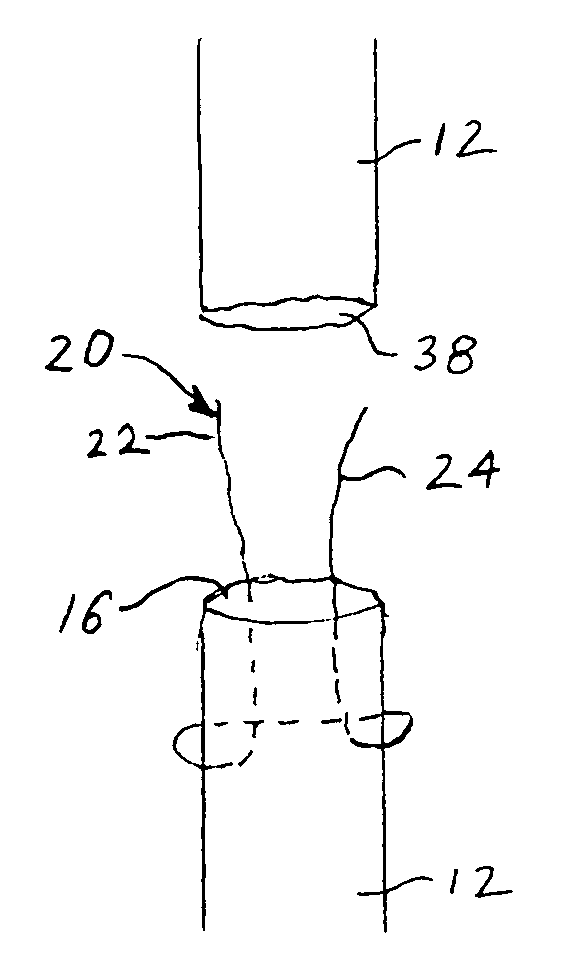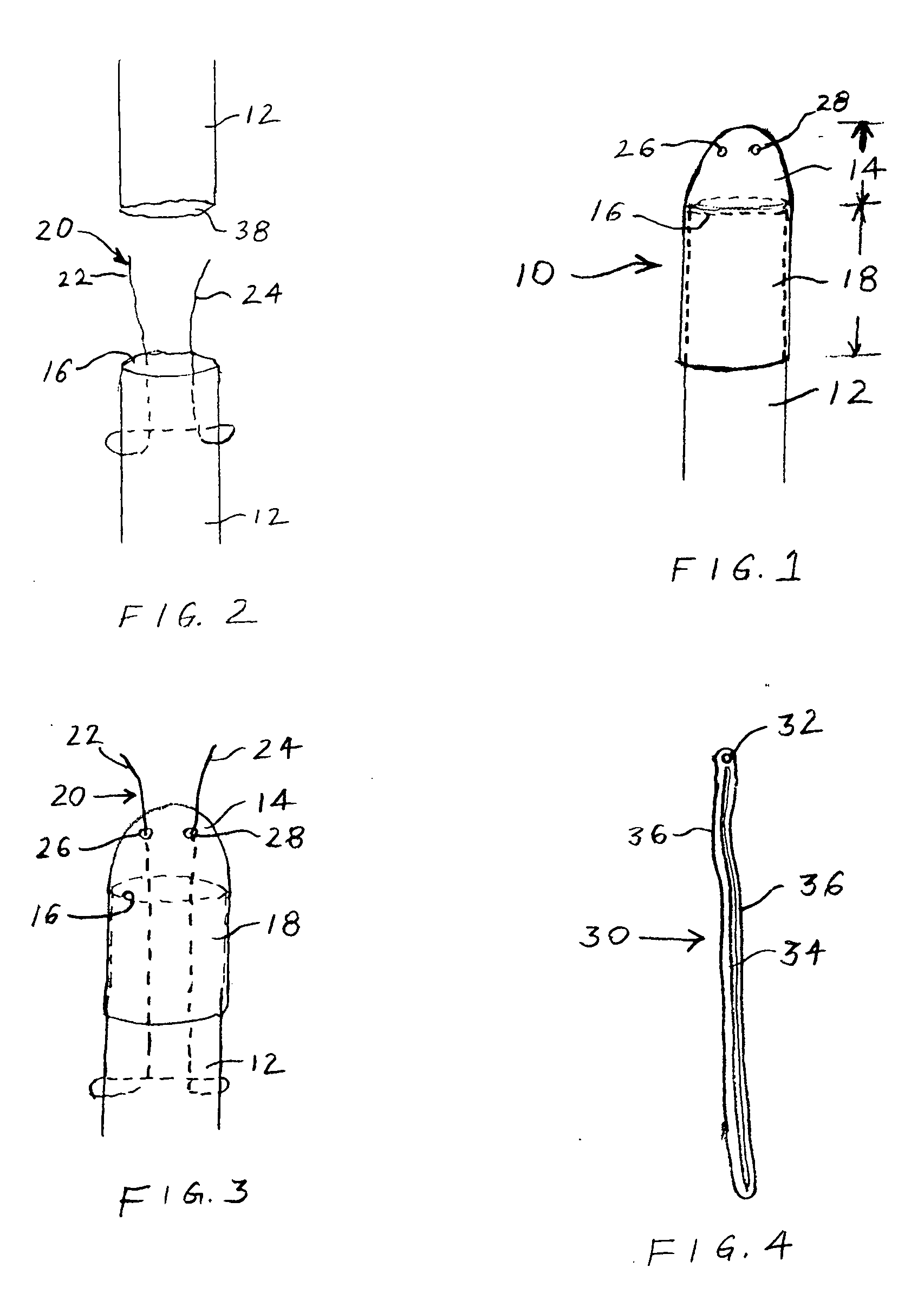Tendon Cap and method for tendon repair
a tendon cap and tendon technology, applied in the field of tendon cap and method for tendon repair, can solve the problems of increased tendon adhesion formation, traumatic injury to the tendon epitenon, tendon end fraying and traumatic injury, etc., to achieve successful tendon repair surgery, increase the amount of time necessary, and the effect of increasing the time required
- Summary
- Abstract
- Description
- Claims
- Application Information
AI Technical Summary
Benefits of technology
Problems solved by technology
Method used
Image
Examples
Embodiment Construction
[0006]The present invention proposes a solution to these problems by providing a tendon cap which is simple for a surgeon to use. The present invention greatly reduces fraying by encompassing the entire end of the tendon in elastic material. The tendon cap can be made of a solid or elastic synthetic or non-synthetic material that encompasses the end of the tendon as described herein.
[0007]As seen in FIGS. 1 and 2, a tendon cap 10 is formed from a thin membrane tube with a flexible membrane cap that is placed over an end 16 of a lacerated or divided tendon 12. The lacerated tendon 12 has an opposite end 38 to which end 16 is to be re-attached. There are two zones to the tendon cap 10. There is a head 14 that fits directly over the end 16 of the tendon 12 and a body 18 which shrouds the tendon 12 for some length from the end 16. This protective tendon cap 10 is designed for minimizing friction and injury when passing the tendon 12 under pulley systems or through a fibro osseous / osseou...
PUM
 Login to View More
Login to View More Abstract
Description
Claims
Application Information
 Login to View More
Login to View More - R&D
- Intellectual Property
- Life Sciences
- Materials
- Tech Scout
- Unparalleled Data Quality
- Higher Quality Content
- 60% Fewer Hallucinations
Browse by: Latest US Patents, China's latest patents, Technical Efficacy Thesaurus, Application Domain, Technology Topic, Popular Technical Reports.
© 2025 PatSnap. All rights reserved.Legal|Privacy policy|Modern Slavery Act Transparency Statement|Sitemap|About US| Contact US: help@patsnap.com


